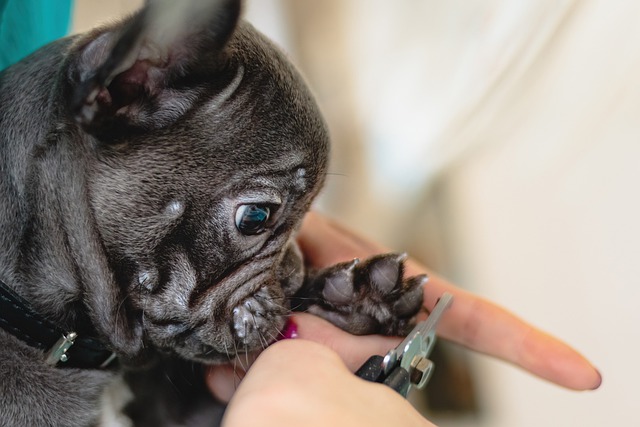Pleco Care Instructions – the Giant Armored Catfish
Contents
Pleco Care Instructions – the Giant Armored Catfish
Pleco Care Instructions The Giant Armored Catfish: Do you want a sucker catfish to help keep your aquarium clean? Many people automatically choose plecostomus catfish (or plecos) because they believe they will magically suck up all the fish droppings and detritus in the aquarium.
Let’s speak about these beautiful animals, their care requirements, and whether plecos are the correct fish for you before acquiring them.
What exactly are plecos?
Plecostomus is the common name for the Loricariidae family of armored sucker catfishes native to Central and South America. The common Pleco (Hypostomus plecostomus) is a cheap cleaning fish frequently offered in pet stores.
However, this 3-inch newborn grows to be over 2 feet tall with an extreme appetite over time (and a corresponding amount of waste).
We strongly advise avoiding purchasing giant fish unless you want to maintain them for their entire lives, as releasing them is highly impossible.
You should also not release your beautiful carp into the wild because it is a highly invasive species that can cause significant environmental damage.
There are, thankfully, considerably smaller plecos that are more suited to the standard home aquarium. Beautiful catfish that grow 4 to 6 inches long include bristlenose, rubber-lipped, and clown plecos.
They are slightly more expensive than typical plecos, but their smaller size and lower food requirements more than compensate.
Are plecos easy to care for?
Their water parameters are generally comparable to those of other tropical fish. They love a heated aquarium with temperatures ranging from 74 to 80 °F (23 to 27 °C) and may live in a pH range ranging from 6.5 to 7.8.
Because most plecos are nocturnal, they like hiding spots or covers that keep them out of the sun.
You will also need to maintain the tank regularly to keep nitrate levels at 40 ppm or lower.
The abovementioned 4- to 6-inch plecos can be housed in tanks containing 20 to 29 gallons of water or more. On the other hand, the common Pleco should probably start in a 75-gallon tank and work their way up to 180 or even 500 gallons.
These massive aquariums are out of reach for the typical fishkeeper. Thus we strongly advise sticking to smaller species.
What do pleco fish consume?
Despite their reputation as cleaner fish, scavengers, and algae eaters, plecos require regular feedings of good quality fish food.
Consider it like owning a pet dog. Yes, the dog will eat scraps falling to the bottom, but it should still get a daily meal of natural dog food.
Catfish, too, require actual food that fits their nutritional requirements. Most people feed them algal wafers. However, most plecos prefer balanced meals with various items, such as frozen bloodworms and Repashy gel food.
Learn about your specific species because not all pleco fish eat the same stuff. Some eat on algae and plants, others enjoy rasping on driftwood, and others require more protein. (While many plleißefish are innocuous to plants, plleißefish have been observed nibbling on sword plants occasionally.)
Because most splice fish are nocturnal, it is best to feed them after the lights are turned out so they may feed while the other fish are less busy.
We frequently hear one issue from new Pleco owners: “I’m not sure why my fish died. Every night, I fed him an algal waffle “. Let’s return to our dog analogy.
If you feed your puppy one cup of food daily, he will most likely require more than one cup as an adult. Similarly, your adult Pleco will require more food than a juvenile to sustain its larger physique. Aim for a round stomach as a general guideline.
Increase the amount of food if the belly is sunken and the fish is underweight.
If the abdomen is too enlarged, the fish may be overeating or suffering from constipation due to too many food residues in the tank. If you notice a lot of long, stringy pleco excrement, nitrates may be building in hazardous quantities, so vacuum the substrate and change the water.
Do plecos consume fish feces?
As previously stated, plecos have different feeding preferences, but none of them eat only on fish feces. While they will eat some when digging in the substrate, fish feces does not contain enough food to keep them alive.
Remember that plecos are live animals that require proper feed, not just cleaners.
What fish can get along with plecos?
Plecos get along with nearly any peaceful fish that isn’t big enough to eat them. Also, do not place fish that are small enough to fit in the mouth of the Pleco.
These catfish usually are scavengers and will not devour other animals unless they have already died. There have been reports of plecos sucking on the mucus layer of other fish. However, this appears to be more common in larger pleco fish that are malnourished.
Keep a smaller pleco and feed it well; you should be fine.
Can you keep two or more plecos in the same tank?
It all depends. Some species (particularly males) can be aggressive toward their kind or other bottom dwellers. To investigate their behavior and inquire about other aquarists’ experiences.
Smaller species, such as the Bristle Tail Catfish, can be kept in groups as long as there are more females than males and enough tunnels and hiding places for everyone to choose their favorite.
Bottom line: select a Pleco that will fit your aquarium when fully grown. Learn about their care and nutrition requirements by reading internet publications and joining social media groups.





I really appreciate how you highlighted the misconceptions surrounding plecos! It’s so easy for new aquarium hobbyists to think that just by adding a pleco, they’ll automatically have a cleaner tank. I’ve had my plecostomus for a few years now, and I can confirm that while they help with algae, they definitely contribute their fair share of waste. It’s a bit of a balancing act!
You raise an important point about the realities of keeping plecos, and your experience reflects a common misunderstanding in the aquarium community. Many newcomers latch onto the idea that a pleco will magically solve their algae problem without realizing the intricacies of maintaining a balanced ecosystem.
You’ve hit on a crucial aspect of aquarium care that often gets overlooked. When I first started with aquariums, I was just as guilty of romanticizing the idea that a pleco could be my knight in shining armor against algae. It took me a while to realize that maintaining a healthy aquatic environment is a lot more complex than that.
It’s great to hear from someone with firsthand experience! You’re spot on about the balancing act. A pleco can definitely contribute to the aquarium’s cleanliness, but they also generate a good bit of waste, which surprises many new hobbyists.
You make a good point about the waste issue with plecos. I remember when I first got mine; I was so excited thinking about the algae control, but then I realized that the tank maintenance became a whole new juggling act. It’s interesting how many people overlook that aspect, especially the newbies.
You’ve hit the nail on the head about the balance between algae control and tank maintenance. It’s easy to get caught up in the idea that a pleco will handle all the algae for you, but it’s a bit of a trade-off with the extra waste. For many beginners, that realization can be a surprise.
It’s great to hear that you found my article insightful. You’ve raised a really important point about how plecos are often viewed in the aquarium hobby; there’s so much more to their role than the common perception of them being just algae-eaters.
It’s really interesting to dive into the specifics of pleco care, especially considering how often they are misunderstood by novice aquarium enthusiasts. People often see them as the ultimate low-maintenance solution to tank cleanliness, but, as you pointed out, their growth potential and waste production can quickly become overwhelming.